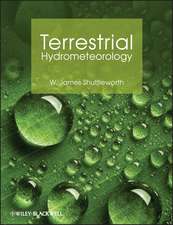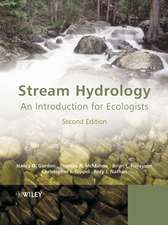Selective Breeding in Aquaculture: an Introduction: Reviews: Methods and Technologies in Fish Biology and Fisheries, cartea 10
Autor Trygve Gjedrem, Matthew Baranskien Limba Engleză Paperback – 14 mar 2012
| Toate formatele și edițiile | Preț | Express |
|---|---|---|
| Paperback (1) | 1105.06 lei 6-8 săpt. | |
| SPRINGER NETHERLANDS – 14 mar 2012 | 1105.06 lei 6-8 săpt. | |
| Hardback (1) | 1111.04 lei 6-8 săpt. | |
| SPRINGER NETHERLANDS – 27 aug 2009 | 1111.04 lei 6-8 săpt. |
Preț: 1105.06 lei
Preț vechi: 1347.63 lei
-18% Nou
Puncte Express: 1658
Preț estimativ în valută:
211.48€ • 229.63$ • 177.64£
211.48€ • 229.63$ • 177.64£
Carte tipărită la comandă
Livrare economică 22 aprilie-06 mai
Preluare comenzi: 021 569.72.76
Specificații
ISBN-13: 9789400736771
ISBN-10: 9400736770
Pagini: 236
Ilustrații: XIV, 221 p.
Dimensiuni: 155 x 235 x 12 mm
Greutate: 0.34 kg
Ediția:2009
Editura: SPRINGER NETHERLANDS
Colecția Springer
Seria Reviews: Methods and Technologies in Fish Biology and Fisheries
Locul publicării:Dordrecht, Netherlands
ISBN-10: 9400736770
Pagini: 236
Ilustrații: XIV, 221 p.
Dimensiuni: 155 x 235 x 12 mm
Greutate: 0.34 kg
Ediția:2009
Editura: SPRINGER NETHERLANDS
Colecția Springer
Seria Reviews: Methods and Technologies in Fish Biology and Fisheries
Locul publicării:Dordrecht, Netherlands
Public țintă
ResearchCuprins
Domestication and the Application of Genetic Improvement in Aquaculture.- The Success of Selective Breeding in Aquaculture.- The Theoretical Basis for Breeding and Selection.- Initiating Breeding Programs.- Breeding Strategies.- Selection Methods.- Mating Design.- Estimation of Breeding Values.- Genotype–Environment Interaction.- Measuring Response to Selection.- Structure of Breeding Programs.- Undesirable Side Effects in Breeding Programs.- Biotechnology in Breeding Programs.- Reproduction Techniques.- Economic Benefits of Breeding Programs.
Textul de pe ultima copertă
This book provides a basic introduction to selective breeding in aquatic species, and describes the concepts behind establishing and running successful breeding programs. Although only 10% of world aquaculture production is currently based on genetically improved stocks, the dramatic gains achieved in species such as Atlantic salmon and tilapia serve to demonstrate the potential of selective breeding to improve growth, product quality, disease resistance and other commercially important traits. As increasing pressure is placed on feed, land and water resources, there is a growing need for such programs to be implemented on a large scale in aquaculture.
The major objective of this book is to introduce selective breeding to a wider audience, using results of numerous studies to show that the high fecundity and genetic variation in most aquatic species can lead to rapid and dramatic improvements. Building on well-established methods based on quantitative genetic theory, the key role that molecular genetics will play in the future of aquaculture breeding is also discussed.
The text was written by Trygve Gjedrem (chapters on breeding theory and planning breeding programs) and Matthew Baranski (biotechnology chapter and general contributions), scientists at one of the world’s leading food and aquaculture research institutes, Nofima Marin.
The major objective of this book is to introduce selective breeding to a wider audience, using results of numerous studies to show that the high fecundity and genetic variation in most aquatic species can lead to rapid and dramatic improvements. Building on well-established methods based on quantitative genetic theory, the key role that molecular genetics will play in the future of aquaculture breeding is also discussed.
The text was written by Trygve Gjedrem (chapters on breeding theory and planning breeding programs) and Matthew Baranski (biotechnology chapter and general contributions), scientists at one of the world’s leading food and aquaculture research institutes, Nofima Marin.
Caracteristici
An introductory guide to breeding programs in aquatic species A comprehensive description of the important concepts behind selective breeding in aquaculture














